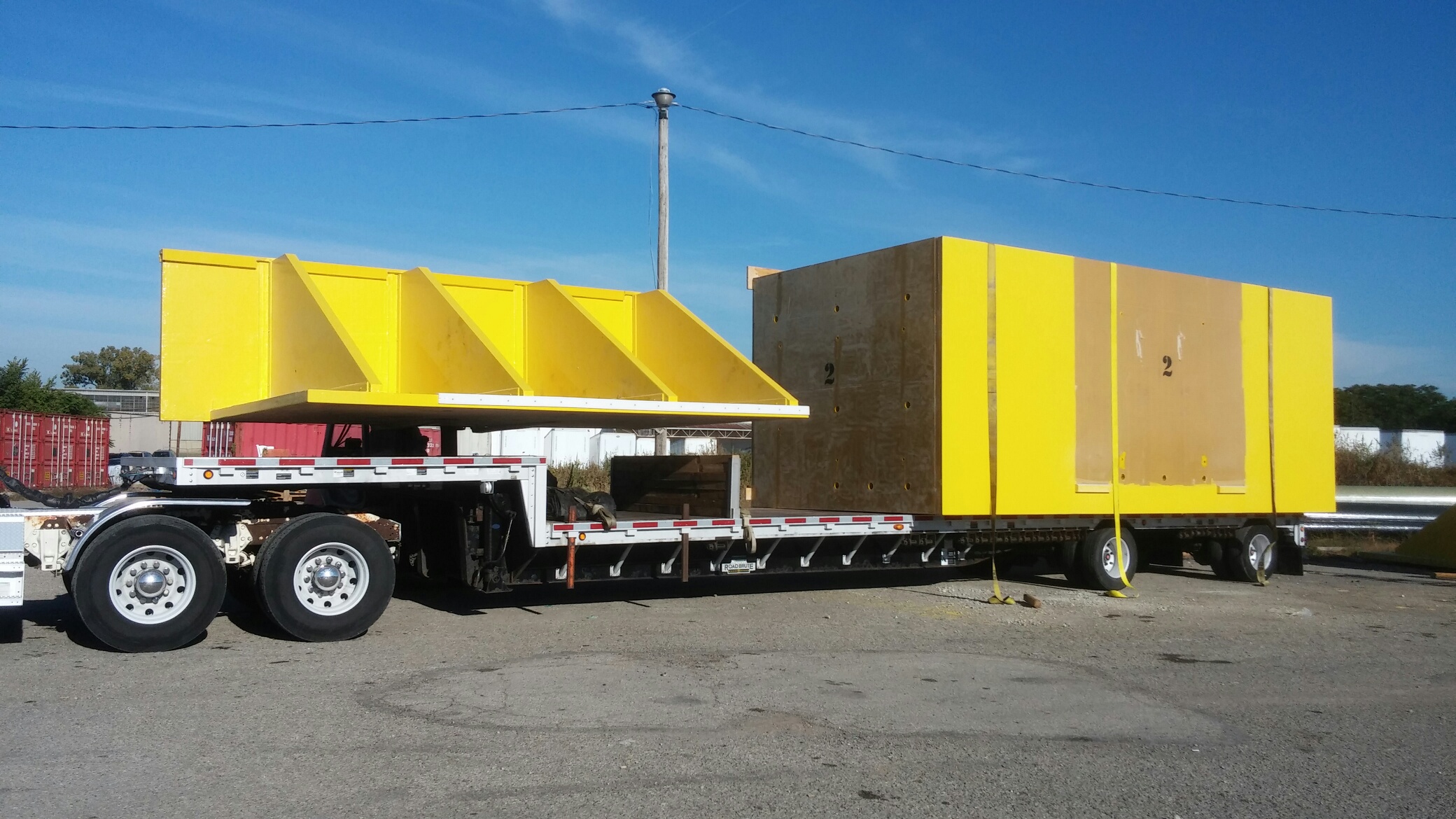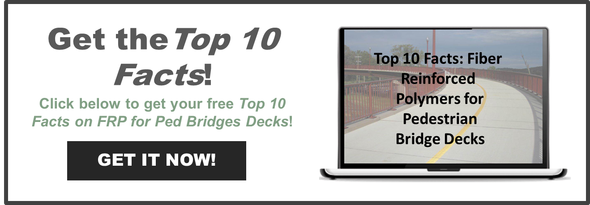How big can a Composite Advantage molded-part get? I hear this question a lot. The easy answer is, "pretty big." The vacuum infusion process is used for large yacht hulls, giant wind turbine blades and everything in between. But the practical answer should be "large but not too large that you can't economically ship it." That's right, shipping is a design input.
What? What I mean is that when designing a product, you need to consider how it's going to get where it's going. Whether a bridge deck or waterfront product, we usually limit the width of a part to 12 feet. If a part is less than 12 feet wide, it can be shipped as a permitted, but unescorted, truck load.
The submarine camels that Composite Advantage supplies to the US Navy consist of separate modules. These modules are manufactured in our shop, then transported to a shipyard near the Navy base where they're assembled into the large final structures. We very strongly considered shipping as an important input when we designed the modules and determined their size. The adjacent photo shows a lower main box and a wing wall being loaded onto a low-deck trailer for shipping to the Pacific Northwest.
 Because fiber reinforced polymer (FRP) materials are lightweight, we have to consider dimensional size as the shipping constraint, not maximum shipping weight as one might assume.
Because fiber reinforced polymer (FRP) materials are lightweight, we have to consider dimensional size as the shipping constraint, not maximum shipping weight as one might assume.
Take this anecdote: Back in the early days of FRP bridge decking, a few truck drivers found themselves in some trouble. A LOT of FRP deck panels can be stacked on one flatbed trailer. These gray, prefabricated panels look a lot like heavy, precast concrete panels. State police officers stopped some of the first FRP deck shipments because they thought they were exceeding max weight. The police knew that only a few precast concrete panels can be transported on a truck. Luckily, the shipping paperwork and panel inspections cleared up the misunderstanding.
Want to learn more about FRP technology? Contact us or download our Top 10 Facts below.

